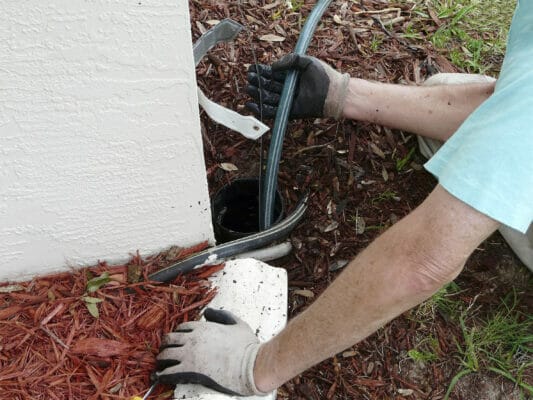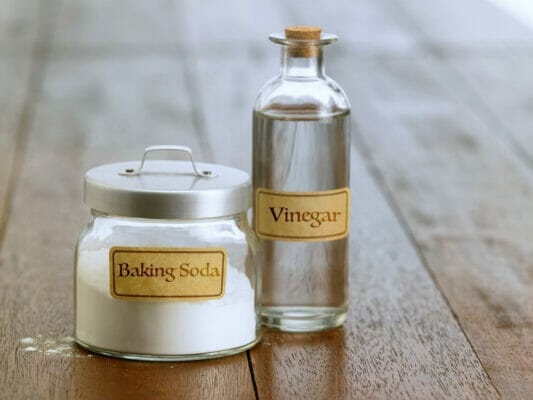Disclaimer: This post may contain affiliate links, meaning we get a small commission if you make a purchase through our links, at no cost to you. For more information, please visit our Disclaimer Page.
Your main drain is clogged if the multiple fixtures in your house have a problem and some fixtures produce smelly water and turbid water. It is also clogged when the water from the toilet backs up when you open the sink.
Table of Contents
Is my main drain clogged?
You will know if your main drain is clogged if you see murky water backing up your drain or toilet. You will also know that it is clogged when the water starts to slow down creating a pool of water on your sink or shower area.
When you experience it, the first thing you need to do is to remove the excess water that back flowed on your sink or floor. You can use DIY drain clog removers such as baking soda and vinegar. If you have store-bought drain clog remover, you can use it as well.
They can solve the clogging problem. If it works, it only means that the clog is just within the sink or the floor. It can be hair or grease that clogged the pipe.
To avoid this problem, avoid dumping materials that can clump up in the drain. Throw coffee grounds in the bin as well as food particles. Don’t flush the toilet with paper products that can cause clogging.
On the other hand, if the problem still occurs, the next step you can do is to use a plunger. If it doesn’t work then you can start to conclude that the main problem is in the main drain. It is important to take note that backing up water and pooling of water are among the signs that there is a drain problem.
But there are several factors you must check to ensure that the source of the problem is the main drain.
To learn it more in-depth, I’ll reveal the ways to know if it is the main drain is clogged or not.
How do I know if my main drain is clogged?
Checking the fixtures in your house is the best way to know if your main drain is clogged. You’ll know that the main drain is clogged when multiple fixtures are not working properly.
If you find that there’s standing water on your sink and no other fixtures have a clog, you don’t need to worry. Most likely, it’s a localized drain and a plunger can solve the problem.
When we talk about a clogged main drain, we’re looking for other issues. That’s why we need to check multiple fixtures to validate that the main drain has a problem.
If there’s one fixture you must check first, it’s the toilet bowl. Then check the other fixtures. Always remember this, when the main drain is clogged, most of the fixtures have a problem.
Bathroom fixtures
An unusual sound, undesirable smell, and bubbling water are the common signs you can spot on a toilet if the main drain is clogged. Whether it is on the first level of your house or on the upper levels, it happens.
The next thing you need to do when the toilet bowl’s water is gurgling or it is backing up, run the sink nearest your toilet. If the water level in the toilet rises, it means that there is trapped air in the main drain.
Check the tub and shower too if there is a backflow on these fixtures. Backflow occurs when you flush the toilet. Run the washing machine and check if the toilet backs up or it overflows. These signs are the indication that there’s a problem in the main clog.
Sewage in cleanout and floor drain
Sewage in the sewer cleanout is another sign that there is a problem with the main drain. You can find the sewer cleanout outside your home with a round cap. Sometimes, it is covered with a rectangular cap. Sewage in the floor drain is also a sign of the main drain problem. It means that the wastewater in the pipes is about to come up to the second drain. You can smell the sewage as well and you need to take action right away.
Noticeable change in lawn
An indentation or a patch of grass that looks swampy is an indication that a sewer line is broken. You can easily recognize it during summer when there is no rainwater.
But you must observe the lawn even if there is rain or snow. Discoloration of the grass is another indication that water sits on the grass for quite a while.

How do I unclog a main drain line?
To unclog a main drain line, prepare the tools you need. You will need a plumbing snake or a sewer rod, whichever is applicable. You will also need goggles to protect your eyes from the sewage and gloves to protect you from the dirt that comes with the water. You may also need a bucket that can be used when removing wastewater.
After preparing the tools, remove the clean-out plug using a wrench. Don’t position yourself on the opening of the plug as wastewater may come out. For a vertical drain line, use a bucket and place it under the clean-out.
Be careful when handling corroded pipes as they may get damaged as you clear the blocked drain.
Plumbing snake
A plumbing snake is popularly known as an auger snake. It has a coiled metal wire called snake which is rotated to reach the clogs. The tip of the snake has an auger head, which helps to remove difficult clogs. The snake comes in different lengths. The longest snake is considered a professional type, which is perfect for the main drain and hard-to-reach pipes.
Auger snake is easy to use. You just need to put the snake wire inside a drain where the problem occurs. To keep the snake in place and to avoid coiling while reaching the clog, keep a length of a maximum of six inches from the opening of the drain.
Then lock the snake using the snake lock. Turn the handle until the entire six inches wire is inside the drain. Pull the wire to release the coil from the drum then lock it again at six inches. Then turn the handle. Repeat the process until you don’t feel any resistance from the main drain.
The resistance from the main drain is the clog. Repeating the steps such as releasing the wire, locking the snake clock, and turning the handle is necessary to remove the clog.
Sewer Rod
Sewer rod is an alternative for plumbing snakes. However, it’s ideal for a shallower clog. The rod comes with a plunger, which you push to the drain to remove clogs.
Stop plunging the drain when the water stops backing up. To test if the clog is removed, fill up the drain with water. If the water is clear and it is not backing up, you cleared the main drain.
Don’t add water to your toilet by flushing it as it will make the problem worse. Don’t run the water in your household. It is advisable to shut off the main water supply. Don’t even opt out of the usage of gears such as goggles and gloves. You must keep yourself clean even though you’re cleaning sewage.
Bacteria comes with wastewater and you don’t want to get those as you unclog the main drain. Fixing the main drain is a bit complicated but doable. All you need are the right tools to do the job.
Conclusion
Keeping an unclog drain is important to avoid contamination and other health problems. On the onset that you see that there’s a clog on your fixtures, grab your draining tool right away. Don’t let the wastewater sit for too long. In case that the solutions above don’t work, call a plumber.

